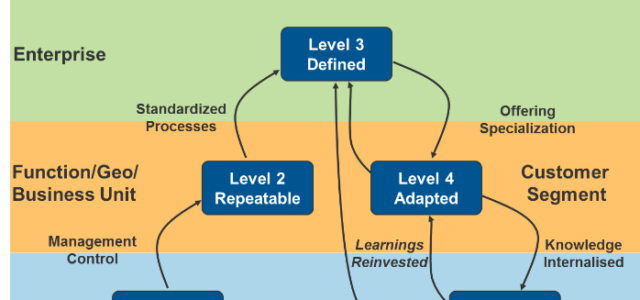Business stakeholders do not yet understand blockchain technology. Blockchain technology is regularly confused with its most prominent implementation or usage to date – the ledger for crypto currency, or the new term “cryto asset” – for bitcoin or ethereum.
To put things in perspective, the original implementation of blockchain technology occurred in 2008 with the introduction of bitcoin on the Bitcoin blockchain (big “B”). The Bitcoin blockchain is simply a public ledger that records bitcoin transactions. Much like the internet over the past three decades, blockchain technology has endured as an underlying technology for 9 years and continues to evolve in its usage and application.
Bitcoin (the protocol and payment network)
Bitcoin with a capital “B” is typically associated with Bitcoin the protocol and payment network. The uppercase form, “Bitcoin,” is also often used to refer to the ecosystem as a whole. Using Bitcoin with a capital “B” is the common way of referencing Bitcoin when writing about it in general terms.
At its core, blockchain technology allows digital information to be distributed but not copied. It is a public, continuously reconciled database.
At present, brands are experimenting with solutions to reduce real world friction for specific use cases leveraging blockchain, the technology.
This article seeks to bring blockchain down to ground and provide an introduction to blockchain the technology, its usefulness, and real-world applications that exist today. As we all learn what the underlying technology can do and the problems it can solve for customers, adoption by brands to develop solutions will increase. I also believe disruption will occur quickly in the coming 1-3 years as customers demand improved, faster experience and blockchain technology is explored to satisfy the demand in appropriate instances.
Blockchain: The Basics
Imagine a system that can scale infinitely, has built in security and empowers the user to share information with other actors in the ecosystem as she or he sees fit. The notion that there is no central authority or point of failure is a core notion behind blockchain technology.
Anatomy of a Blockchain Solution
There are four main components of blockchain technology.
- Distributed Ledger. A shared record of all transactions on the network. The strength of the ledger is that each participant is granted access to the node in which they participate and passes that permission on to the next participant to create an immutable record.
- Permissions. There can be permissioned or permissionless blockchains. Permissionless blockchains are distributed networks that rely on the strength and security of the federated nature of the chain to build trust. Permissioned blockchains are typically used by brands to create rules or governance. Highly regulated industries like financial services (think FINRA) or healthcare (HIPPA) where oversight builds customer trust through adherence to rules are good examples of the use case for permissioned blockchains.
- Consensus algorithm. Think of consensus as a trustless authority that provides a mechanism to validate the transaction between two known or unknown parties. Consensus enables a trusted and known agreement to become a transaction that is committed to the ledger by all parties. There are several ways to create consensus including proof of stake, multi-signature, and Practical Byzantine Fault Tolerance (PBFT) protocols.
- Smart Contract. A smart contract is simply an automated agreement or executable code that governs a transaction. If conditions are met by the participating parties or nodes of the chain, the contract is triggered.
Applications, data and messaging provide a user interface to the above blockchain technology. Think of applications, data and messaging in a similar way to that which we utilize today for the internet. In the customer-facing interface – the front end application – the user experience will matter just as it does today.
The Value of Blockchain: Reduced Time, Process & Information Friction
- Time friction. Business and individuals benefit when the middleman is removed from a transaction. Being able to address a customer pain point, such as more quickly accessing money when executing a financial transaction, will become commonplace as peer-to-peer or node-to-node transactions are faster and more secure. By reducing time constraints related to “how” the system will work to enable a strategy, more energy can be applied to enrich and innovate around problems.
- Process friction. Inherent in today’s marketplace are mechanisms that empower a central authority rather than the consumer. By further breaking down the barriers and federating interactions between parties, the system operates more harmoniously. The nature of a distributed set of transactions captured through a public record of all previous, anonymous transactions removes the tension inherent in the monolithic central hub system.
- Information friction. By empowering customers to own and manage their own information and transactions and validating a two party contract with a trustless third party verification authority, the overhead of paperwork and communications to access, store and manage information is removed. Additionally, the security of the information is maintained. Given the breaches of trust that have occurred recently with social security numbers and credit information, the reduction or removal of information friction is a key catalyst for the adoption of blockchain technology.
Five (5) Commonly Discussed Blockchain Use Cases
- Personal Identity. Rather than social security cards, passports, licenses and proof of registration through federal, state and local bureaus, an individual would own their information and share the needed and appropriate information when transacting with a body. For example, when getting married, the people getting married could both provide required information and execute an agreement through an executable contract – a smart contract – in near real time.
- Patient record. Blockchain technology can empower the patient by enabling her/him to own their medical identity and decide who can receive their information and what information the actor can access. For example, when you change doctors or visit a specialist like a dermatologist, you as the patient could control the elements or nature of information shared with each party.
- Financial settlement. Consider the time and frustration we have all experienced trying to execute financial settlements. Whether it is settlement associated with paying debts or freeing up financial assets, time and process friction results in the consumer losing valuable interest and the time value of money. Examples could be -1) selling a stock or mutual fund and streamlining the settlement time by closing the transaction and sending the money directly to the customer eliminating the cutting of a check and mailing or electronically transferring the money between institutions (which charge a fee and are earning interest on the money in the interim), or -2) automating the distribution of a benefit or other estate assets upon a life event or execution of a power of attorney (as an immediate event with smart contract).
- Supply chain. Custody of information across various supply chain examples represent interesting uses of blockchain technology. We have all paid for a record of car service and accidents (or the dealer has) and we have all seen commercials and checked food or other products based on announced recalls. Blockchain technology has the ability to streamline the information flow and identify in real time the source, custodians, location and end nodes in the supply chain. Examples could be -1) car title and history from manufacturer to dealer to lessor to lessees to scrap metal recycler, or -2) record of seed supplier to farmer to buyer to distributor to grocer to consumer.
- Charitable giving. A common concern about charitable giving is whether and what percentage of the funds reach the intended organization and cause. Utilizing blockchain technology, a donor is able to verify that the funds are received by the intended individual, organization or group without other financial custodians or middle players. The gift is also received directly resulting in a more immediate impact as the lag in time and potential cost in having the donation change hands is eliminated.
Blockchain Insights
- People do not yet understand the value blockchain provides. As customers learn what the underlying technology can do for them, and brands move from experimentation to implementation of experiences that reduce real world friction, blockchain technology will come of age.
- UX & visual consistency will build trust and adoption of blockchain. Standards will emerge that create conventions that we understand and expect similar to those created in applications we use on the internet. The creation of applications and user experiences that make blockchain technology easy and transparent to the user will provide a basis for building trust.
- Blockchain adoption will occur more quickly than it did with the internet. Blockchain as a technology will become more pervasive faster than it did during the internet cycle, simply because we have experienced this before. Real needs and sanity will govern the strategy and implementation of blockchain as consumers have a louder voice. Brands are also more adept at pivoting strategy and implementing innovative experiences and technology to satisfy the change and needs of their customers.
Article by channel:
Everything you need to know about Digital Transformation
The best articles, news and events direct to your inbox
Read more articles tagged: Blockchain, Featured







